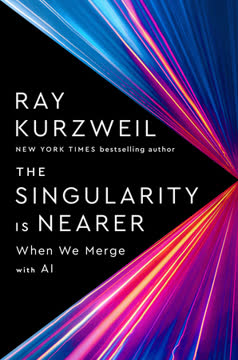Key Takeaways
1. Economic growth has failed to deliver the good life
"Despite the doubling of UK per capita income, we possess no more of the basic goods than we did in 1974; in certain respects, we possess less of them."
Keynes's prediction unfulfilled. In 1930, John Maynard Keynes predicted that by 2030, technological progress and compound interest would solve the "economic problem," allowing people to work just 15 hours a week. While his growth forecasts were largely accurate, his vision of reduced working hours has not materialized.
Reasons for failure:
- Power imbalances between capital and labor
- Insatiable human desires inflamed by advertising and social comparison
- Shift from manufacturing to services, with lower-paid service jobs
- Unequal distribution of productivity gains, favoring capital over labor
Consequences:
- Stagnant or declining real wages for many workers
- Longer working hours in some countries (e.g., US) compared to others (e.g., Netherlands)
- Increasing income inequality
- Persistence of the "economic problem" despite vastly increased wealth
2. Insatiability is rooted in human nature but inflamed by capitalism
"Capitalism has inflamed our innate tendency to insatiability by releasing it from the bounds of custom and religion within which it was formerly confined."
Human nature and insatiability. While the tendency towards insatiability is part of human nature, capitalism has exacerbated this trait by:
- Carving out new markets through want manipulation
- Broadening the scope of status competition
- Promoting an ideology hostile to the idea of "enough"
- Increasing monetization of the economy
Consequences of unchecked insatiability:
- Endless pursuit of wealth without purpose
- Environmental degradation
- Social fragmentation and loss of community
- Neglect of non-material aspects of well-being
Historical perspective: Pre-modern societies had cultural and religious constraints on acquisitiveness. Capitalism has largely removed these constraints, leading to a culture of perpetual want-creation and consumption.
3. The idea of the good life has disappeared from public discourse
"The eclipse of the good life explains the endless expansion of wants outlined in Chapter 1."
Loss of ethical language. Modern public discourse has largely abandoned discussions of the good life, focusing instead on:
- Economic growth as the primary measure of progress
- Individual choice and neutrality between competing conceptions of the good
- Subjective well-being or happiness as the ultimate goal
Consequences:
- Lack of shared vision for societal progress
- Difficulty in justifying limits on consumption or work hours
- Erosion of common cultural and ethical standards
Historical contrast: Earlier societies had clearer ideas of the good life, often based on religious or philosophical traditions. These provided a framework for evaluating and limiting economic activity.
4. Happiness is not a reliable measure of well-being
"Generally speaking, happiness is good only where it is due; where sadness is due, it is better to be sad."
Limitations of happiness economics:
- Measurement problems: Surveys are often insensitive to changes in well-being
- Cultural biases: Expressions of happiness vary across cultures
- Adaptation: People adapt to both positive and negative circumstances
Ethical problems:
- Treating happiness as the sole good ignores other important values
- Risk of promoting shallow or delusional happiness
- Neglect of the objects or sources of happiness
Alternative approach: Focus on objective indicators of well-being, such as health, education, and social relationships, rather than subjective happiness alone.
5. Environmental concerns alone do not justify abandoning growth
"The problems of global warming, serious as they are, do not on their own require us to abandon growth."
Limitations of environmental arguments:
- Uncertainty in long-term climate predictions
- Potential for technological solutions
- Discounting of future welfare
Ethical basis for limiting growth:
- Harmony with nature as a basic good
- Critique of consumerism and waste
- Concern for quality of life over quantity of goods
Balanced approach: Address environmental concerns while recognizing the ethical imperative to improve living standards, especially in developing countries.
6. The basic goods: health, security, respect, personality, harmony with nature, friendship, and leisure
"The basic goods are essentially non-marketable: they cannot properly be bought or sold."
Criteria for basic goods:
- Universal
- Final (not means to other ends)
- Sui generis (not part of other goods)
- Indispensable
The seven basic goods:
- Health: Physical and mental well-being
- Security: Stability and predictability in life circumstances
- Respect: Recognition of one's worth and dignity
- Personality: Ability to form and execute a life plan
- Harmony with nature: Connection to the natural world
- Friendship: Deep, affectionate relationships
- Leisure: Self-directed, non-instrumental activity
Importance: These goods provide a framework for evaluating social progress and individual well-being beyond economic measures.
7. Policy proposals to exit the rat race and promote the good life
"Our task, then, is twofold: to ensure that the fruits of productivity are shared more evenly; and to reduce the pressure to consume."
Key policy proposals:
- Progressive reduction in working hours
- Basic income or capital endowment for all citizens
- Progressive consumption tax
- Restrictions on advertising
- Reform of education to prepare for leisure
Underlying principles:
- Non-coercive paternalism
- Emphasis on creating conditions for the good life
- Balance between individual freedom and social good
International implications:
- Retreat from further economic integration
- Focus on domestic production in developed countries
- Support for developing countries' protection of infant industries
- Reform of global capital flows
Last updated:
FAQ
What's How Much Is Enough? Money and the Good Life about?
- Purpose of Wealth: The book explores the purpose of wealth, questioning the relentless pursuit of economic growth and insatiability in affluent societies.
- Keynesian Influence: It references John Maynard Keynes's vision of a future with less work and more leisure, critiquing why this hasn't been realized despite technological advancements.
- Moral and Ethical Focus: The authors emphasize the need to redefine what constitutes a good life, suggesting wealth should enhance human welfare rather than be an end goal.
Why should I read How Much Is Enough? Money and the Good Life?
- Timely Critique: The book offers a critical examination of capitalism's moral and economic failures, relevant in an era of inequality and environmental concerns.
- Philosophical Insights: It blends philosophy and economics, advocating for a revival of economics as a moral science, providing a fresh perspective on contemporary issues.
- Practical Implications: The authors suggest policy changes to achieve a good life for all, making it relevant for policymakers and anyone interested in societal well-being.
What are the key takeaways of How Much Is Enough? Money and the Good Life?
- Insatiability Critique: The authors argue that insatiability is exacerbated by capitalism, calling for a reevaluation of what constitutes "enough" in terms of wealth.
- Defining the Good Life: They outline seven basic goods necessary for a good life, emphasizing accessibility for all citizens.
- Policy Recommendations: The book proposes policies to curb wealth pursuit and promote equitable resource distribution, aligning growth with human welfare.
What are the best quotes from How Much Is Enough? Money and the Good Life and what do they mean?
- Epicurus on Contentment: “Nothing is enough for the man to whom enough is too little.” This highlights the theme of insatiability and the futility of endless accumulation.
- Historical Wisdom: “Our call is to chain up the monster again by recalling what the greatest thinkers of all times and all civilizations have meant by the ‘good life.’” It emphasizes reconnecting with historical values.
- Wealth as a Means: “Making money cannot be an end in itself.” This critiques the obsession with wealth accumulation, advocating for using wealth to enhance life quality.
How do the authors define the "good life" in How Much Is Enough? Money and the Good Life?
- Seven Basic Goods: The authors identify health, friendship, leisure, and other goods as essential for a good life, fundamental to human flourishing.
- Philosophical Foundation: The definition is rooted in philosophical traditions emphasizing virtue and moral character, not just material wealth.
- Collective Responsibility: Achieving the good life requires collective action and policy changes, ensuring all citizens can attain these basic goods.
What is the authors' view on economic growth in How Much Is Enough? Money and the Good Life?
- Critical of GDP Focus: The authors challenge GDP growth as the primary success measure, arguing it overlooks leisure and environmental health.
- Growth as By-product: They propose growth should result from policies aimed at the good life, not as an end goal, encouraging a holistic view of success.
- Limits to Growth: The book suggests wealthy nations may have enough GDP, and further growth could be detrimental, calling for a reevaluation of growth's role.
How does How Much Is Enough? Money and the Good Life address the issue of inequality?
- Wealth Concentration Critique: The authors highlight the growing gap between rich and poor, calling it morally unacceptable in a resource-rich world.
- Economic Policies for Equity: They suggest policies like progressive taxation and social welfare programs to reduce inequality and achieve the good life for all.
- Moral Imperative: Addressing inequality is framed as a moral issue, emphasizing societal commitment to ensuring access to basic goods for everyone.
What is the relationship between wealth and happiness according to How Much Is Enough? Money and the Good Life?
- Wealth ≠ Happiness: The authors argue that increased wealth doesn't necessarily lead to greater happiness, especially in affluent societies.
- Relative vs. Absolute Wealth: They discuss the importance of relative wealth, noting that comparisons can lead to dissatisfaction despite absolute wealth.
- Complex Happiness: Happiness is influenced by factors beyond wealth, like relationships and fulfillment, advocating for a broader understanding of happiness.
How do the authors propose to achieve the good life for all in How Much Is Enough? Money and the Good Life?
- Policy Recommendations: They outline policies promoting basic goods like healthcare and leisure, arguing for government roles in ensuring accessibility.
- Cultural and Ethical Revival: The authors call for ethical considerations in economic decisions, redirecting focus from wealth accumulation to the good life.
- Collective Action: Emphasizing the need for collective action, they argue individual efforts are insufficient, requiring societal commitment to these goals.
How does How Much Is Enough? Money and the Good Life relate to environmental concerns?
- Harmony with Nature: The authors argue that environmental stewardship is a basic good necessary for a good life, emphasizing sustainable living.
- Critique of Growth and Consumption: They critique the environmental impact of continuous growth and consumerism, advocating for a sustainable approach.
- Ethical Responsibility: The book calls for collective ethical responsibility to care for the environment, integrating human well-being with ecological health.
What are the basic human goods identified in How Much Is Enough? Money and the Good Life?
- Seven Basic Goods: Health, security, respect, personality, friendship, harmony with nature, and leisure are identified as essential for a good life.
- Indispensability of Goods: Lacking any of these goods results in serious harm, underscoring their importance for all individuals.
- Universal Relevance: These goods are presented as universally applicable, reinforcing their fundamental role in human flourishing.
What solutions do the authors propose for achieving a good life in How Much Is Enough? Money and the Good Life?
- Work-Life Balance: Policies promoting reduced working hours and increased leisure time are suggested to prioritize relationships and fulfillment.
- Basic Income and Work Sharing: They propose basic income for financial security and work-sharing to distribute labor equitably.
- Community and Relationships: Emphasizing community and meaningful relationships, the authors argue these are essential for a good life and overall well-being.
Review Summary
How Much is Enough? explores the concept of the "good life" and challenges modern capitalism's focus on endless economic growth. The authors argue for a shift towards prioritizing leisure, relationships, and personal fulfillment over material consumption. While praised for its philosophical depth and thought-provoking ideas, some reviewers found the policy recommendations weak and the environmental chapter controversial. The book blends economics, philosophy, and history to critique current economic systems and propose alternative ways of thinking about wealth, happiness, and societal progress.
Similar Books










Download PDF
Download EPUB
.epub digital book format is ideal for reading ebooks on phones, tablets, and e-readers.






